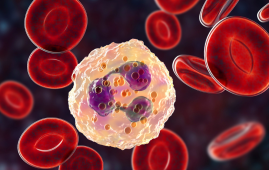

According to a WHO study, around 49 million instances of sepsis occur each year, with 11 million deaths caused by sepsis in 2017. This represents 20% of all global deaths.
It goes without saying that it is critical to obtain timely and accurate information about which germs have entered a patient’s blood so that doctors can prescribe the appropriate drugs to stop the infection. This is where two doctors from northern Norway confirmed a diagnostic breakthrough.
Important for small acute-care institutions
Hege Harboe-Sjåvik from Helgeland Hospital Trust and Kristoffer Hammer Endresen from Nordland Hospital Trust, in partnership with CANS—Centre for New Antibacterial Strategies at UiT The Arctic University of Norway, investigated a new approach for identifying bacteria in blood.
Their work appears in the journal APMIS
During the coronavirus pandemic, few smaller hospitals employed the BCID2 approach to evaluate COVID-19 testing, but it has yet to be deployed in Norway for quick sepsis analysis. The doctors wanted to see if this novel and rapid procedure works as well in smaller hospitals as it does in larger hospitals.
This would represent a huge step toward faster and more effective patient care for suspected sepsis at local hospitals. Smaller hospitals, which are frequently located distant from major laboratories, must identify the bacteria responsible for an infection in order to deliver the appropriate medications more rapidly.
Faster analyses, similarly good outcomes
From July to December 2021, researchers analyzed 160 blood samples with microorganisms collected at Helgeland Hospital Trust in Mo i Rana, Sandnessjøen, and Mosjøen. Rapid testing were conducted at local hospitals, while routine tests were done at a microbiological laboratory at the regional hospital in Bodø.
The doctors in Helgeland received test results two days quicker than before, and they were nearly as accurate as the tests done at the huge laboratory in Bodø, where the bacteria were cultivated in the customary way.
The new technology also demonstrated the possibility of offering improved antibiotic treatment to patients in one out of every four situations.
“The conclusion is that this is a reliable and accurate supplement to standard diagnostics for rapidly detecting bacteria in blood samples. Endresen believes the strategy has significant promise for more targeted antibiotic use in local hospitals.
“This is a novel method with significant potential for improved treatment and equal services at local hospitals. Two days’ faster test findings can have a substantial influence on critically ill patients at local hospitals. According to Harboe-Sjåvik, this can lead to more fair patient treatment by eliminating the need for patients or healthcare professionals to be transferred between hospitals. “These are important findings for a growing patient group at local hospitals.”
“The findings indicate that there are significant prospects for more accurate antibiotic use, and that this tool has the potential to reduce needless use of broad-spectrum antibiotics in local hospitals. “This is critical in the fight against antibiotic resistance,” Endresen says.
In little under 3% of cases, the new test failed to detect the bacteria found in the blood. There were no cases where the fast test detected germs in the blood when none existed, known as false positives.
For more information:
Hege Harboe‐Sjåvik et al, FilmArray (BCID2) provides essential and timely results in bloodstream infections in small acute care hospitals without conventional microbiology services, APMIS (2024). DOI: 10.1111/apm.13374
more recommended stories
 Urine-Based microRNA Aging Clock Predicts Biological Age
Urine-Based microRNA Aging Clock Predicts Biological AgeKey Takeaways (Quick Summary) Researchers developed.
 Circadian Control of Neutrophils in Myocardial Infarction
Circadian Control of Neutrophils in Myocardial InfarctionKey Takeaways for HCPs Neutrophil activity.
 E-Cigarette Use and Heart Attack Risk in Former Smokers
E-Cigarette Use and Heart Attack Risk in Former SmokersKey Takeaways for Clinicians and Nurses.
 36-Week Pre-eclampsia Screening May Reduce Term Risk
36-Week Pre-eclampsia Screening May Reduce Term RiskA New Preventive Strategy for Term.
 Cardiovascular Risk and Sudden Cardiac Death in Diabetes
Cardiovascular Risk and Sudden Cardiac Death in DiabetesRising Sudden Cardiac Death (SCD) Risk.
 Poor Kidney Function and Alzheimer’s Biomarkers Explained
Poor Kidney Function and Alzheimer’s Biomarkers ExplainedPoor kidney function may influence levels.
 Walking Speed Before Hip Replacement Predicts Recovery
Walking Speed Before Hip Replacement Predicts RecoveryNew Evidence Points to a Simple,.
 Neuroblastoma Drug Combo Extends Survival in Models
Neuroblastoma Drug Combo Extends Survival in ModelsA Promising Shift in High-Risk Neuroblastoma.
 Safer Allogeneic Stem Cell Transplants with Treg Therapy
Safer Allogeneic Stem Cell Transplants with Treg TherapyA new preclinical study from the.
 How Soybean Oil Impacts Weight Gain and Metabolism
How Soybean Oil Impacts Weight Gain and MetabolismWhy Soybean Oil May Affect Metabolism.

Leave a Comment